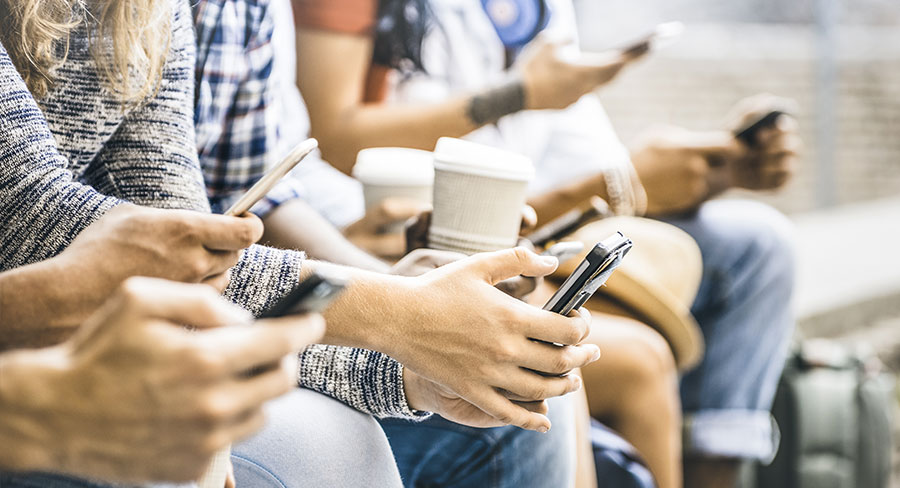Media consumption on mobile devices globally will rise to 28% by 2020. Mobile media will continue to take share from other media, according to Zenith’s Media Consumption Forecast 2018 released today.
The report found mobile media consumption globally will reach 24% in 2018, increasing 5% since 2011.
Locally, Australian consumers’ mobile media consumption will increase 143% by 2020 compared to 2013. Local digital media consumption will rise to 190 daily minutes by 2020, up 8% on 2017.
The rise of mobile is forcing brands to transform the way they plan their communications across media, focusing less on channels and more on consumer mind-set as the distinctions between channels are eroded.
Zenith Australia CEO Nickie Scriven said: “The Forecast predicts mobile will attract 123.6 daily minutes by 2020, so the important focus for marketers in Australia will be how their ecosystems are optimised across platforms and content. With consumers increasingly searching for and consuming content on mobile devices they will have little tolerance for brands and content that is not mobile optimised. Then when we overlay consumer mind-set with mobile consumption, marketers need to ensure their content is welcome and adds value on such a personal device.

Zenith Australia CEO Nickie Scriven
“Despite their erosion in daily consumption, this year’s Forecast found that time spent consuming traditional channels will start to slow by 2020, especially across TV (-1%) and radio (0%). Mobile will continue to outpace consumption in these channels, growing by 9% from 2017 to 2020.”
Zenith’s Media Consumption Forecast 2018 is the report’s fourth annual edition, which surveys changing patterns of media consumption since 2011. It also forecasts how the amount of time people allocate to different media will change between 2018 and 2020 in 63 countries across the world.
Zenith’s Media Consumption Forecast 2018 global findings
The rise of mobile
Mobile internet use has eroded the consumption of almost all other media. Newspapers and magazines have lost the most. The Forecast estimates that between 2011 and 2018 time spent reading print media has fallen by 45% for newspapers and 56% for magazines. However, this refers only to time spent reading printed publications. Time spent reading newspapers and magazines online is included in the internet total. For many publications, the time they have gained online more than makes up for the time they have lost from print.
Television and radio have also lost out, but not on the same scale as print media. The Forecast estimates that time spent watching television decreased by 3% between 2011 and 2018. Meanwhile, time spent listening to radio declined by 8%. However, television channels and radio stations have gained audiences online at the same time as they have lost them offline. They have faced stiff competition from native digital platforms such as YouTube and Spotify.
From channel to mindset
The rise of mobile has blurred the boundaries between different channels. It can be used for entertainment, news, information, research, socialising and communication. For brands it can play the role of building awareness, creating direct responses, allowing one-to-one communication or generating earned content. This depends on how the consumers are using the device, in particular their mindset while using it.
A consumer who is actively searching for specific information is in a very different mindset from one who is sharing holiday photos with friends, or leaning back and enjoying a video. Brands need to understand the signals consumers’ activity provides about their mindset, and therefore what forms of communication are appropriate.
Focusing on mindset also dissolves the distinction between traditional and digital media. It’s more important that consumers are reading news, than whether they are doing so using a printed newspaper or newspaper websites. People who are watching video content on television sets, laptops or smartphones have much in common. However, people watching long-form entertainment can have quite different mindsets from people scrolling short-form content on social media. Brands need to decide the role each platform plays in their communications strategies, however the consumer happens to access it.
Media consumption continues to grow
The rapid expansion of mobile internet use has increased the amount of time the average individual spends consuming media. The Forecast estimates that the average person will spend 479 minutes a day consuming media in 2018. This is 12% more than in 2011. The report estimates the total will reach 492 minutes a day in 2020.
Time spent at the cinema actually increased 3% between 2011 and 2018 as cinema owners invested in more screens and a better experience for visitors. Studios have also marketed their films more effectively at international audiences. On average, though, people spend much less time at the cinema than they do with any other medium – just 1.7 minutes a day in 2018. Zenith expects this to rise to 1.9 minutes in 2020.
